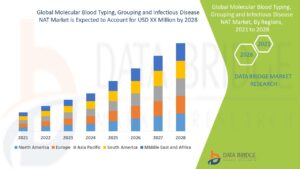Why IFRS Sustainability Standards Matter for Future-Focused Businesses
In today’s evolving business landscape, sustainability has moved from a peripheral concern to a central strategic priority. The introduction of the IFRS Sustainability Disclosure Standards—IFRS S1 and IFRS S2—marks a major milestone in that shift. These standards provide a consistent, global framework for disclosing sustainability-related financial information, enhancing both transparency and accountability.
For future-focused businesses, especially in Australia, adopting these standards is not just about compliance—it’s about building resilience, trust, and long-term value in a sustainability-conscious market.
Understanding IFRS S1 and IFRS S2
The IFRS Foundation, through the International Sustainability Standards Board (ISSB), introduced IFRS S1 and IFRS S2 to unify sustainability-related disclosures. These standards are designed to integrate sustainability risks and opportunities into mainstream financial reporting, making them accessible and relevant to investors and stakeholders.
- IFRS S1 outlines the general requirements for disclosing material sustainability-related financial information. It requires companies to report on risks and opportunities that could reasonably be expected to affect enterprise value over the short, medium, or long term.
- IFRS S2 focuses specifically on climate-related disclosures. It includes governance, strategy, risk management, and metrics and targets, enabling companies to report on how they manage climate-related risks and opportunities.
By aligning with these standards, companies can ensure their disclosures are consistent, comparable, and decision-useful.
Strategic Benefits for Businesses
Adopting the IFRS sustainability disclosure standards can yield significant strategic advantages:
Enhanced Investor Confidence
Investors increasingly factor sustainability into their decision-making. Transparent reporting under IFRS S1 and S2 equips investors with credible, standardized insights, allowing them to better assess a company’s future prospects. This transparency helps companies attract a broader base of sustainability-conscious capital.
Improved Risk Management
The standards encourage businesses to identify and assess sustainability risks early. Whether it’s supply chain disruptions due to climate change or shifting customer preferences, integrating these factors into risk management frameworks leads to greater resilience and operational agility.
Regulatory Alignment and Market Access
Globally, regulators and policymakers are leaning toward standardized disclosure requirements. Early adoption of IFRS sustainability disclosure standards positions companies ahead of evolving regulations and strengthens their ability to operate and compete across international markets.
Stronger Stakeholder Relationships
Transparency on sustainability efforts builds trust. Whether it’s customers, employees, partners, or communities, stakeholders are more likely to engage with companies that demonstrate clear accountability and long-term thinking.
Practical Steps for Implementation
Adopting IFRS S1 and S2 doesn’t happen overnight. It requires a systematic approach and the right tools:
1. Conduct a Materiality Assessment
Start by identifying which sustainability factors are material to your business. This involves stakeholder engagement and assessing which issues are most likely to impact financial performance.
2. Strengthen Governance
Ensure oversight of sustainability-related risks is integrated into your board and executive functions. Clearly defined roles and internal structures are essential for reliable reporting.
3. Build Robust Data Systems
High-quality reporting depends on high-quality data. Companies need systems to gather, validate, and report on sustainability data across all business units.
4. Use Technology for Reporting
Digital platforms can streamline the disclosure process. For instance, Speeki provides tailored software solutions to help businesses prepare sustainability reports that align with IFRS S1 and S2. These tools simplify data management, ensure consistency, and improve audit readiness.
5. Commit to Continuous Improvement
Sustainability and disclosure standards will evolve. Companies must stay informed and continue refining their reporting frameworks to reflect emerging risks, opportunities, and stakeholder expectations.
The Australian Opportunity
For Australian companies, adopting IFRS sustainability disclosure standards presents a strategic opportunity. As international expectations around sustainability disclosures rise, aligning with globally recognized standards strengthens Australia’s position in the global economy.
It also signals a leadership position in sustainability, resonating with local consumers and investors who increasingly prioritize environmental and social responsibility.
Conclusion
The IFRS S1 and S2 standards are more than just reporting frameworks—they are tools for strategic transformation. For businesses committed to long-term success, adopting these standards means gaining deeper insights into sustainability risks, meeting stakeholder expectations, and demonstrating accountability in a measurable way.
As the momentum toward standardized sustainability reporting grows, future-focused businesses have a clear opportunity: embrace IFRS sustainability disclosure standards now to build a resilient, transparent, and trusted enterprise for the future.











